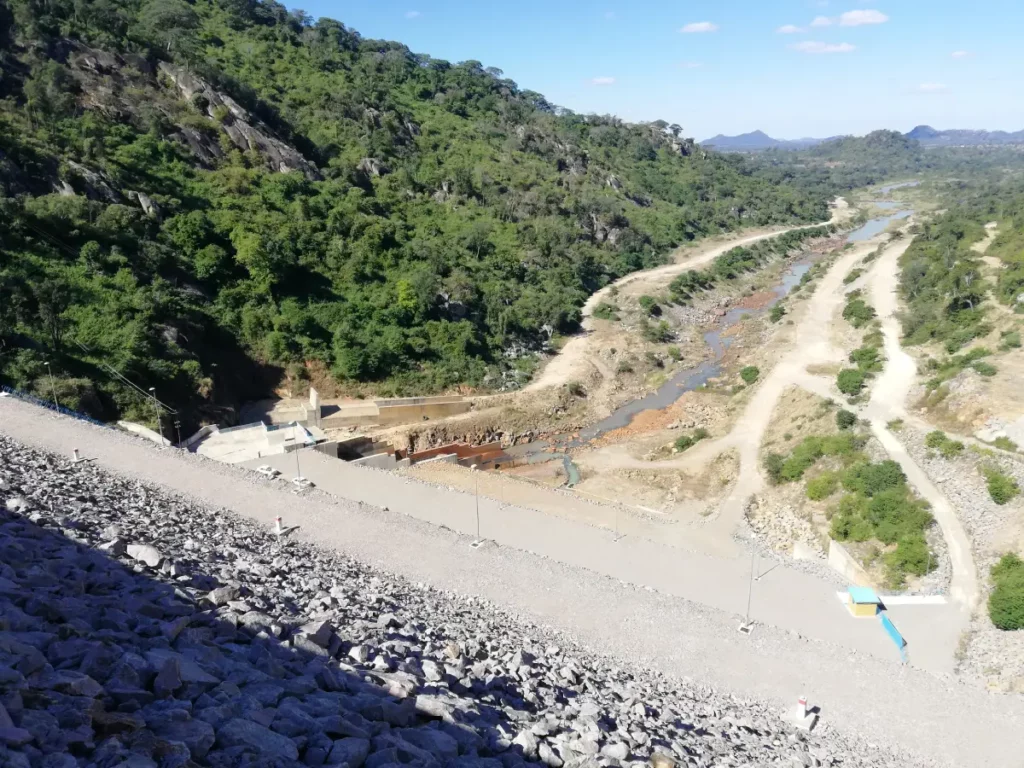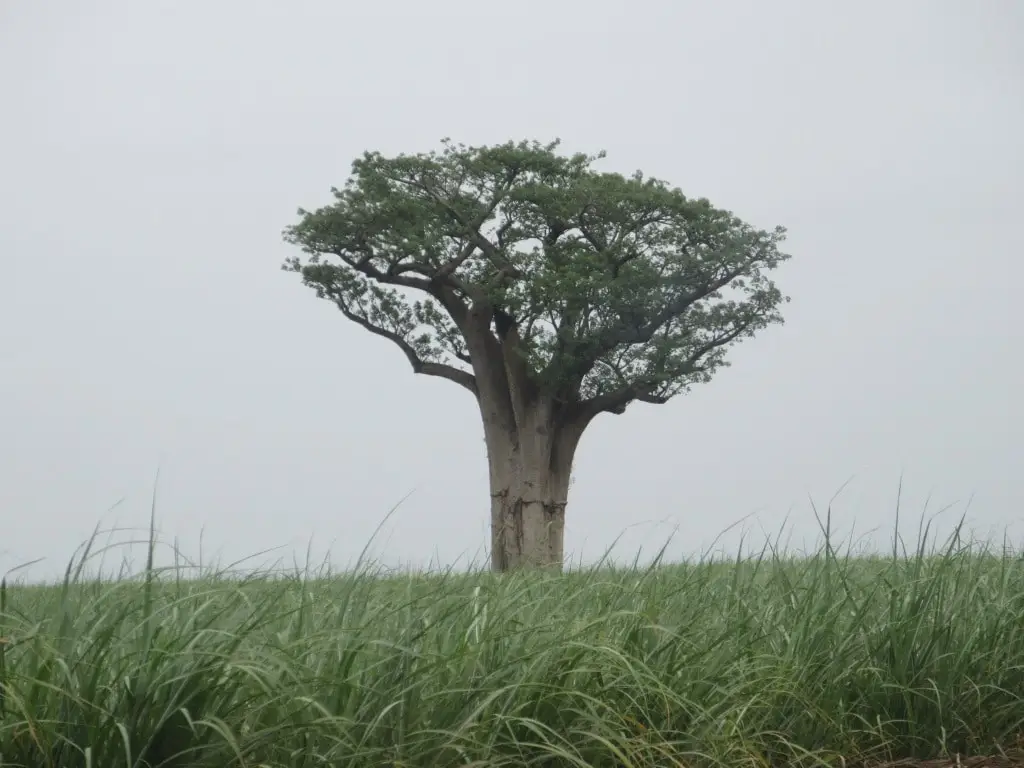Zimbabwe, a land of diverse landscapes and rich cultural heritage, is well-equipped with eight national airports, seven of which are international, enhancing its accessibility and appeal as a travel destination. From the grandeur of Victoria Falls to the historical depths of Great Zimbabwe, these airports serve as vital connectors to the country’s myriad attractions.
International Airports in Zimbabwe: Global Connectors
- Robert Gabriel Mugabe International Airport: The largest in Zimbabwe, located in Harare, it’s a primary gateway into the country and Southern Africa.
- Victoria Falls International Airport: A key entry point to one of the Seven Natural Wonders of the World, and a hub for adventure tourism.
- Joshua Mqabuko Nkomo International Airport: Based in Bulawayo, it links travelers to cultural festivals and heritage sites.
- Masvingo Airport: Situated near the Great Zimbabwe National Monument, this airport is a gateway to ancient history.
- Buffalo Range Airport: Located in the southeastern Lowveld, it offers access to renowned wildlife conservancies and the Great Limpopo Transfrontier Park.
- Charles Prince Airport: Situated near Harare, this airport is a hub for flight training and charter operations.
- Kariba Airport: Close to the world’s largest man-made lake and a haven for wildlife and fishing enthusiasts.
Domestic Gateway: Hwange National Park Airport
Hwange National Park Airport, the sole domestic airport, serves as a crucial link to Zimbabwe’s largest national park, a haven for the Big Five and a diversity of wildlife.
Deep Dive into Airports in Zimbabwe
Robert Gabriel Mugabe International Airport

Robert Gabriel Mugabe International Airport, established in 1956 and initially known as Salisbury Airport, stands as the main gateway to Zimbabwe and a strategic entry point into Southern Africa. Located just 15 kilometers south of Harare, Zimbabwe’s vibrant capital, the airport is nestled in an area celebrated for its modern architecture, expansive parks, and an array of tourist attractions in and around the city.
Harare, the capital city where the airport is situated, is a blend of contemporary buildings, wide streets, and lush green spaces. Sitting high on Zimbabwe’s central plateau, it’s a city that juxtaposes urban sophistication with natural beauty, offering visitors a unique African urban experience.
The Airport’s Key Features and Developments
As Zimbabwe’s largest airport, Robert Gabriel Mugabe International boasts a sprawling runway 4,725 meters long and 46 meters wide, accommodating large aircraft like the Boeing 777 and B747. The international terminal has a capacity for 2 million passengers annually, while the domestic terminal handles up to 500,000 passengers. Significant expansion plans are underway to enhance its international terminal and surrounding infrastructure, projecting to increase its capacity to six million passengers per year.
Comprehensive Facilities and Services
- Diverse Commercial Offerings: With over 60 shops, including internet cafes, restaurants, banks, and fashion boutiques, the airport caters to all passenger needs.
- Operational Excellence: The facility operates around the clock, ensuring continuous service and support.
- Efficient Passenger Handling: Equipped with three carousels, two conveyor belts, and 28 check-in counters, the airport ensures smooth passenger flow.
- Aircraft Accommodation: The domestic terminal can park ten large aircraft simultaneously, while the international terminal has space for two light aircraft and six large aircraft.
- Safety and Fuel Services: Category 9 fire cover, two fully-manned fire stations, and consistent availability of JET A1 and AVGAS fuel.
- Passenger Convenience: Offering catering services, airside shuttle buses, extensive parking, and car rental options.
- Health and Safety: Medical services and pharmacies are readily available for travelers’ health needs.
- Global Connectivity: The airport is identified by ICAO Code: FVRG and IATA Code: HRE, with Runway Designation 05/23 and a Runway strength of PCN50 F/A/W/T.
What airlines fly to Harare, Zimbabwe?
The airport hosts a range of airlines, enhancing Harare’s connectivity with the world. Airlines operating include Airlink, Air Zimbabwe, FlySafair, South African Airways, Air Tanzania, Qatar Airways, Emirates, Fastjet, RwandAir, Ethiopian Airlines, Kenya Airways, and LAM Mozambique, ensuring global accessibility to and from Harare.
Victoria Falls International Airport: Gateway to a Natural Wonder

Victoria Falls International Airport is more than just an airport; it’s a portal to one of the most awe-inspiring natural wonders of the world – Victoria Falls. Situated 21 kilometers southeast of Victoria Falls Town, the airport serves as the perfect starting point for a journey into a world of unparalleled beauty and adventure.
Victoria Falls: A Majestic Natural Marvel
The majestic Victoria Falls, known locally as Mosi-oa-Tunya (The Smoke that Thunders), is a breathtaking sight. With thunderous cascading water spanning 1,708 meters wide and 108 meters high on the Zambezi River, it’s no wonder this site has earned its place as one of the Seven Natural Wonders of the World and a UNESCO World Heritage site. Victoria Falls is not just a stunning visual spectacle; it’s the heartbeat of a region brimming with diverse wildlife and vibrant tourism activities, rightfully earning the title ‘Africa’s Adventure Capital.’
The Airport as a Regional Tourism Hub
Established in 1966 as a regional airport and sprawling over approximately 500 hectares, Victoria Falls International Airport has become a pivotal regional tourism hub. Its strategic location allows passengers to connect to eight countries within Southern Africa, including Zambia, South Africa, Botswana, Angola, Congo, Malawi, Mozambique, and Namibia, all within a two-hour flight.
Facilities and Services at the Airport
- Runway and Taxiway: A 4,000 meters long and 60 meters wide runway, accommodating wide-body aircraft like B747-400, B777, and A340.
- Advanced Navigation and Safety Systems: Equipped with a Category II Instrument Landing System and Airfield Ground Lighting.
- Terminal Features: The airport boasts fully air-conditioned international and domestic terminal buildings, linked for ease of passenger movement, with a combined capacity to handle 1.5 million passengers annually.
- Passenger Amenities: Three aerobridges, ample parking for wide and light body aircraft, and comprehensive passenger handling facilities.
- Operational Efficiency: The airport operates from 0600 to 1800 hours daily, with the flexibility to extend operational hours upon request.
The Heart of Eco-Tourism Development
The airport is integral to the Kavango Zambezi Trans-Frontier Conservation Area (KAZA-TFCA), the world’s largest conservation area, spanning five countries. This positioning makes it a key contributor to international eco-tourism development, offering visitors easy access to a region rich in biodiversity and cultural heritage.
Which airlines fly to Victoria Falls?
Airlines flying to Victoria Falls include Air Zimbabwe, Kenya Airways, Airlink, Fastjet, Fly Safair, CemAir, and South African Airways, connecting Victoria Falls with the world and vice versa.
Joshua Mqabuko Nkomo International Airport

Joshua Mqabuko Nkomo International Airport, originally established in 1959 as Bulawayo Airport, stands as a testament to Zimbabwe’s rich cultural heritage and historical depth. In 2013, the airport underwent a significant transformation with the rehabilitation and extension of its passenger terminal, boosting its capacity to 1.5 million passengers per annum. This expansion was more than just a physical upgrade; it was a rebranding in honor of one of Zimbabwe’s most esteemed leaders, the late Dr. Joshua Mqabuko Nkomo, Vice President of the Republic of Zimbabwe.
Bulawayo: The City of Kings and Queens
Located 25 kilometers north of Bulawayo, Zimbabwe’s second-largest city known as the City of Kings and Queens, the airport serves as a gateway to this culturally vibrant city. Bulawayo, with a metropolitan population exceeding 1.5 million, is a melting pot of history, culture, and art. It hosts numerous cultural festivals, including the famous Intwasa Arts Festival, and provides access to world heritage sites like the Khami National Monument and Matobo Hills.
State-of-the-Art Facilities and Services
- Runways: Equipped with two runways, measuring 2,588 meters by 45 meters and 1,347 meters by 30 meters, respectively.
- Passenger Handling: With a total annual capacity of 1.5 million passengers, the airport is equipped to handle a significant volume of travelers.
- Safety and Security: Category 7 Airport Rescue & Fire Fighting Services, which can be upgraded as needed, ensuring high safety standards.
- Advanced Navigation Systems: The main runway features a CAT I Instrument Landing System, enhancing safety and precision in landings.
- Operational Efficiency: 14-hour operations encompassing Air Traffic Control, Meteorological Services, Aviation Security, and Fire Cover.
- Customs and Immigration: Facilitated by Zimbabwe Revenue Authority (ZIMRA) and Immigration, operational from 0600hrs to 1900hrs with after-hours availability by arrangement.
- Fuel Facilities: Managed by Zuva Petroleum and Puma Aviation, with substantial handling capacities for both JET A1 and AVGAS.
Airlines that fly to Bulawayo
The airport serves as a critical link between Bulawayo and various destinations, ensuring the city’s place in the global travel network. Airlines operating to and from the airport include Fastjet, Airlink, Air Zimbabwe, and Ethiopian Airlines, connecting Bulawayo to a wider international audience and catering to both business and leisure travelers.
Masvingo Airport

Masvingo Airport, nestled just 2.5 nautical miles east of the City of Masvingo in southern Zimbabwe, stands as a crucial gateway not only to the city itself but also to some of the country’s most significant historical and natural sites. This airport is a conduit to the ancient and the majestic – from the Great Zimbabwe National Monument, a UNESCO World Heritage site, to the expansive Lake Mutirikwi and the imposing Tugwi Mukosi dam.
A Convergence Point for Diverse Travelers
The airport is frequented by a variety of visitors, including tourists drawn to the region’s rich archaeological heritage, local residents, and personnel from mining companies like Murowa Diamonds, Bikita Minerals, Renco Mine, as well as members of the local farming community.
Facilities and Services: Catering to Essential Needs
- Operational Hours: Regular operations run from 08:00 to 16:00, with the flexibility to extend hours when required.
- Runway Specifications: A 1,726-meter-long and 18-meter-wide runway, accommodating a range of aircraft including IFR/VFR and light to medium-sized ones.
- Geographic Coordinates: Situated at 200343S 0305143E, the airport is easily accessible.
- Customs and Immigration: Available with 24-hour prior booking, ensuring smooth entry and departure for international visitors.
- Security: Round-the-clock security services ensure the safety and well-being of passengers and aircraft.
- Code: MVZ
The Role of Masvingo Airport in Tourism and Commerce
Primarily, flights to Masvingo Airport are operated by private charters, catering to the needs of tourists exploring the area’s historical sites, businesses in the mining sector, and the local agricultural community. This tailored approach to air travel supports the diverse needs of the region’s economy and tourism sector.
Buffalo Range Airport

Buffalo Range Airport, nestled in the serene South Eastern Lowveld of Zimbabwe, is more than just an airport. It is a warm invitation to explore the natural beauty and wildlife richness that Zimbabwe has to offer. Centrally positioned between the sugar towns of Triangle and Chiredzi, which are 30 kilometers apart, it serves as a strategic link to some of the most fascinating destinations in the region.
A Hub for Conservation and Adventure
Buffalo Range Airport is the primary access point to the main conservancies in the South Eastern Lowveld, namely Save Valley, Malilangwe, and Bubiana. These areas are renowned for their abundant wildlife and scenic beauty. Moreover, the airport is a gateway to the Great Limpopo Trans Frontier Park, a colossal conservation area that unites the Gonarezhou National Park in Zimbabwe with Limpopo National Park in Mozambique and Kruger National Park in South Africa.
Unique Access to Eco-Tourism and Industrial Developments
In addition to conservation areas, the airport provides access to significant industrial developments like Green Fuels production at Chisumbanje and the colossal Tugwi Mukosi Dam. These sites represent the diverse range of attractions accessible via Buffalo Range Airport, from natural to industrial wonders.
Facilities and Services: Catering to Diverse Needs
- Runway: A 1,578 meters long and 30 meters wide runway, capable of accommodating aircraft as large as a Boeing 737-700 executive series.
- Fuel Services: Comprehensive aviation fuel facilities with substantial storage capacities for Jet A-1 and Avgas.
- Safety Measures: Equipped with Category 5 fire cover, ensuring high safety standards.
- Operational Hours: Open from 0700 to 1700 hours local time, with customs and immigration services readily available.
- Meteorological Services: Ensuring that flights are conducted safely under informed weather conditions.
Connectivity and Operations
Buffalo Range Airport directly connects with OR Tambo International Airport, facilitating easy access to and from major international destinations. The airport primarily handles non-scheduled charter flights and private flights, with Federal Air providing scheduled charter flights twice a week. Other frequent operators include Execujet, Sunrise Aviation, and several more, highlighting the airport’s popularity among private and corporate travelers.
Nearby Tourist Attractions
The airport is surrounded by various tourist attractions, enriching the travel experience for visitors. Notable sites include:
- Chilojo Cliffs: Offering breathtaking views and geological wonders.
- Gonarezhou National Park: A haven for wildlife enthusiasts.
- Singita Pamushana (Malilangwe Trust): Renowned for luxury safaris and conservation efforts.
Charles Prince Airport

Charles Prince Airport, with its rich history rooted in the early 1940s, serves as a pivotal link in Zimbabwe’s aviation story. Initially established as a training base for pilots in the Royal Air Force and the Southern Rhodesian Air Force during World War II, the airport has evolved significantly over the decades. Its journey from a military base to a key player in civilian aviation is a testament to its resilience and adaptability.
From Military Base to Civilian Aviation Center
After its closure post-World War II, the airfield witnessed a new chapter when the Mashonaland Flying Club (MFC) relocated to what was then known as Mount Hampden Airfield in 1957. The transition marked a shift from military to civilian aviation, with the airfield soon becoming a hub for pilot training and general aviation activities.
The Legacy of Charles Hilton Prince
The airfield’s renaming in 1978 as Charles Prince Airport, in honor of Charles Hilton Prince’s significant contributions, marked a significant milestone. Charles Hilton Prince, an experienced pilot and air traffic controller, served as the airport manager from 1958 to 1973. His dedication and pioneering efforts in aviation led to the recognition of the airfield’s potential as a key player in Zimbabwe’s aviation sector.
Strategic Location and Operations
Situated in Mt Hampden, just 12 kilometers from Westgate and 23 kilometers from the Harare Main Post Office, Charles Prince Airport operates under the ownership of the Airports Company of Zimbabwe (Private) Limited. It is strategically positioned within the Zvimba Rural District Council’s jurisdiction, serving as a base for flight training organizations, charter operators, and aircraft maintenance organizations.
Facilities and Services
- Runways and Taxiways: The airport boasts two crossing runways, with the primary runway being 1,200 meters long and the secondary runway 925 meters long. Parallel taxiways complement these runways, enhancing operational efficiency.
- Aircraft Capacity: Catering to aircraft with a maximum all-up weight of 5,700 kg, the airport features two parking aprons capable of accommodating up to 35 light aircraft.
- Operational Hours: The airport is operational from 0600 to 1800 hours daily, extending to 2000 hours on Wednesdays.
- Immigration and Customs: Fully manned by Immigration and Zimbabwe Revenue Authority personnel, ensuring smooth processing for both domestic and international flights.
- Safety and Fuel Services: Equipped with Category 5 fire cover and comprehensive aviation fuel facilities offering both Jet A-1 and Avgas.
Kariba Airport

Kariba Airport, with its rich history and strategic location, serves as a key access point to the natural wonders of northern Zimbabwe. Established in the mid-20th century and initially managed by the Federal Hydro-Electric Board, the airport has grown to become an essential part of the region’s tourism and transport infrastructure.
Historical Development
Originally owned by the Federal Hydro-Electric Board since 1894, Kariba Airport underwent significant transformations, starting in 1955, to accommodate larger aircraft like the DC3. By November 1958, the new site was operational, equipped with modern telecommunications, fire and rescue equipment, and other essential facilities. Notably, the airport’s infrastructure was further enhanced to host the Queen Mother’s Canadian C4 aircraft from 1959 to 1960.
Strategic Location and Natural Wonders
Located close to the Kariba Dam, the world’s largest man-made lake and a major source of hydroelectric power for Zimbabwe, the airport is not just a hub of industrial importance. It is also a gateway to the rich wildlife and lush landscapes that define this region. Lake Kariba and the Zambezi River area are teeming with diverse flora and fauna, making it a paradise for nature enthusiasts.
Airport Facilities and Operations
- Runway Specifications: The airport boasts a 1,650-meter-long and 18-meter-wide runway, with a pavement classification number (PCN) of 21/F/D/Y/U, capable of accommodating aircraft weighing up to 41,000 kilograms.
- Fuel Services: Availability of Jet A1 and AVGAS with significant storage capacities ensures uninterrupted operations for various aircraft.
- Safety Measures: Category 5 fire cover is in place, adhering to safety standards.
- Operational Hours: The airport functions from 0700 to 1800 hours local time, with provisions for immigration and customs services.
Kariba’s Tourist Attractions
Kariba Airport is more than just a point of arrival or departure; it’s a launchpad for numerous adventurous activities. The area is renowned for game viewing, canoeing, fishing, sailing, village tours, and hunting. The annual Kariba Invitational Tiger Fishing Tournament, a highlight in the angling calendar, attracts hundreds of enthusiasts. For those seeking thrill, activities like bird watching, cruises, quad-biking, parasailing, and speed boating are readily available.
Convenient Access to Surrounding Attractions
A unique advantage of Kariba Airport is its proximity to several airstrips in the Zambezi Valley, such as Bumi Hills, Kiplings, Fothergill, and Mana Pools, all within a 20-minute flight. This accessibility makes it an ideal starting point for tourists wishing to explore the broader region’s natural beauty and wildlife.
Conclusion
Zimbabwe’s airports are more than just transit points; they are gateways to exploration, offering access to the country’s rich tapestry of natural wonders, wildlife, and cultural heritage. Each airport, with its unique location and services, plays a pivotal role in the country’s tourism industry, enhancing the travel experience for both international and domestic visitors. Were you aware that Masvingo Airport is an international airport?



